Judging Elk in the Field
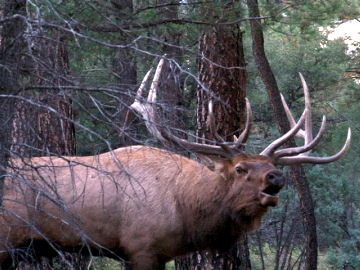
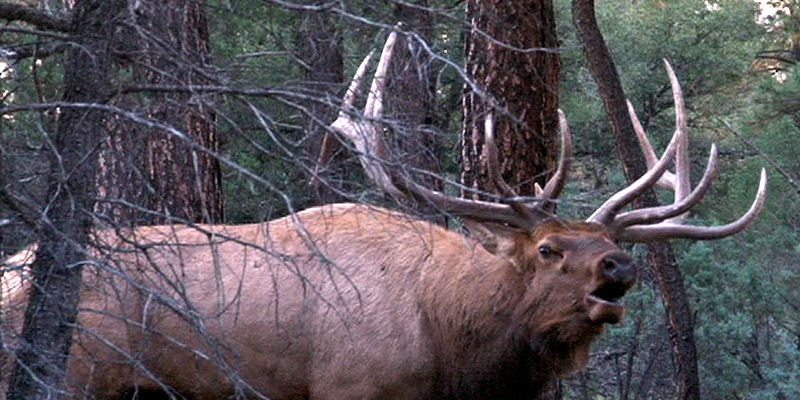
For this Feature, we’ve tapped the eagle eyes of Steve Chappell, one of the best field judging experts in the elk hunting world, producer of the Extreme Bulls video series and owner of Chappell Guide Service.
How to Accurately Score a Bull on the Hoof
by Steve Chappell
With the draw results out in the western states there are many hunters celebrating their good fortune in the draw. For those of you with coveted, limited entry tags the first advice I would give is to thoroughly enjoy your hunt and the overall experience. Many times we hunters get overly caught up with “trophy hunting”. As a result, we put too much pressure on ourselves to kill a bull that scores “X” amount. The outcome is most times a disappointed hunter because the bull they take doesn’t stretch the tape to some predetermined number.
 Now of course to be real here, I know that when we do draw a premium elk tag that we want to make the most of the tag. Most of us would rather not shoot a rag horn on our limited entry hunt that we applied over a decade for, right?! So, with the proper balance in mind let’s look at a great method for scoring mature bulls on the hoof. Other than big fish stories, I don’t know of anything that gets stretched more than the size of a bull elk’s rack. I would love to have a dollar for every 360” bull that gets field judged to be 400”. I’d be hunting the San Carlos Reservation every year!
Now of course to be real here, I know that when we do draw a premium elk tag that we want to make the most of the tag. Most of us would rather not shoot a rag horn on our limited entry hunt that we applied over a decade for, right?! So, with the proper balance in mind let’s look at a great method for scoring mature bulls on the hoof. Other than big fish stories, I don’t know of anything that gets stretched more than the size of a bull elk’s rack. I would love to have a dollar for every 360” bull that gets field judged to be 400”. I’d be hunting the San Carlos Reservation every year!
The Base 200” Scoring System:
Probably the most important aspect of field judging bulls is to have a solid, accurate starting place to build from. Here is how the Base 200 system works.
Most big mature bulls will have main beams close to 50 inches long. Some are longer and some a bit shorter, but 50 is a good estimate to start from.
Big bulls will have an inside spread of very near to 40 inches and also right around 30 inches of mass per side. Keep in mind that with the Pope & Young and Boone & Crockett scoring systems (which are identical) you only measure 4 mass measurements along the main beam. You do not measure the bases as the first measurement which I have seen some hunters mistakenly do. You start by taking the first measurement at the smallest diameter between the first and second point, and then so on until you have 4 measurements total per side no matter how many points (tines) the bull has (See Corey’s section on Scoring Elk).
If you add these totals up for main beams, spread, and mass from both sides you get 200 inches. This is going to be a very close estimate for most big bulls and serves as our solid starting point.
Once you have this base to start from you simply start adding a bull’s tine lengths to 200”. For instance, if a bull is a fairly symmetrical 6×6 just add up one side of his points (G1, G2, G3, G4, & G5) and multiply by two.
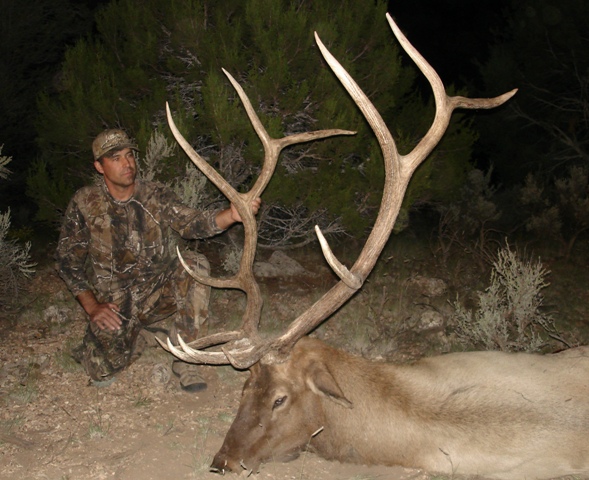 Using our system, let’s see what it would take to make a 350” bull. Start with 16” G1’s and G2’s, 12” G3’s, 20” G4’s, and 12” G5’s. Add these up and you get 76 inches. Multiply by 2 and you have 152”. Now add 152” to our base of 200” and you have a 352” bull.
Using our system, let’s see what it would take to make a 350” bull. Start with 16” G1’s and G2’s, 12” G3’s, 20” G4’s, and 12” G5’s. Add these up and you get 76 inches. Multiply by 2 and you have 152”. Now add 152” to our base of 200” and you have a 352” bull.
A 350” bull must have an average of 16 inches for his G1 through G4 points and 10 inch G5’s to be about 350”. That’s a lot of antler!
Keep in mind that on 6×6’s you don’t add the extension of the main beam past the bull’s G5 as a “sixth point”. This measurement has already been accounted for in the main beam measurement.
Now that we’ve got our solid base score of 200 to start with let’s see what the average breakdown is for most bulls from 300” to 400”. Some bulls may vary from this, but these are very realistic of what you will see on mature 6×6 bulls. Keep in mind with this Base 200 system that as you go below 340 size bulls your base 200 numbers will need to be slightly adjusted as noted below.
300” Bull: G1= 14”, G2= 14”, G3=10”, G4= 16”, G5= 8. Note that a 300” bull will more likely have 45” main beams about 54” inches of total mass and a 35” spread. These totals amount to 303”.
320” Bull: G1=15”, G2= 15”, G3= 12”, G4= 16”, G5= 8”. Note that a 320” bull will likely have 46 to 48 inch beams, about 56 inches of total mass, and a 38 inch spread. These totals amount to right at 320”.
340” Bull: G1= 16”, G2= 16”, G3= 12”, G4= 18”, G5= 10”. Add these to the base of 200” for your total of 344”
360” Bull: G1= 16”, G2= 16”, G3= 16”, G4= 20”, G5= 12”. Add these to the base of 200” for a total of 360”.
380” Bull: G1= 18”, G2= 18”, G3= 16”, G4= 20”, G5= 15”. Note that most 380” bulls will have 52 to 56 inch beams, and a spread of potentially more than 40 inches. Taking this into account gives us 378” to around 385”.
400” Bull: G1= 20”, G2= 20”, G3= 20”, G4= 20, G5= 16”. Again, most 400” bulls will have 54” to 56” inch beams, and a spread of potentially more than 40 inches. This results in these point lengths totaling 397” to 400” plus!
Notice by comparing these “classes” of bulls that misjudging a couple of points by a couple of inches will affect the accuracy of your score. I feel that if you can estimate a bull on the hoof within 10 inches, you are a good field judge. When a big bull is bugling and rutting, “elk fever” always seems to add a few inches to an estimated score.
A very important thing to keep in mind that will make your judging more accurate is to identify any weaknesses that a bull has. Most bulls that I see either have weak 3rds or weak 5ths. Any bull that has a solid “200 inch base” and no visible weaknesses is usually a 340” or better bull using this system. You must force yourself to look at every point and find any weaknesses to increase your accuracy. It’s very easy to stare at great fronts or a big whale tail and miss those 6” third points! Notice that 6” thirds would make a 350” type bull that should have 12” or better thirds, a 338” bull. Still not a bad bull, but not 350”!
Judging Non Typical & 7×7 bulls:
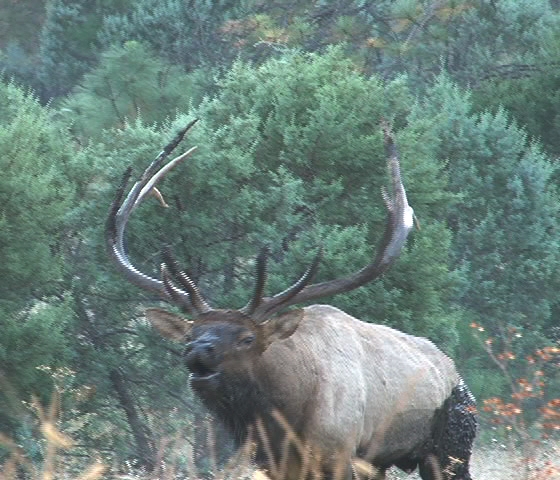 I realize that not every bull will be a typical 6×6. Here’s what to do when you run up against non typicals or bulls such as 7×7’s.
I realize that not every bull will be a typical 6×6. Here’s what to do when you run up against non typicals or bulls such as 7×7’s.
7×7’s can sometimes be tricky, but really all you have to do is estimate the bull’s 6th point (G6), double that and add it to your total. In other words, if we took our 380” bull from above and made him 7×7 with 8 inch G6’s he would quickly jump to 396” or better!
Non Typical bulls are undoubtedly the hardest to judge in the field. Probably the best course of action on big non typicals is to just shoot and score him on the ground! But seriously, the way to judge them is to score their frame and points just like you would a typical 6×6, then size up the non typical points and add that to your total. Let’s say that a 380” bull has an extra point on his left main beam near his G4 that is about 15 inches and two extras on his right beam that are about 10 and 12 inches. That’s right, you should have already shot! That 380” bull with these extras would score around 417”. Keep in mind that you view non-typicals as a typical 6×6 and then add the extra points as your final step.
Finding and indentifying “Shooter” Bulls:
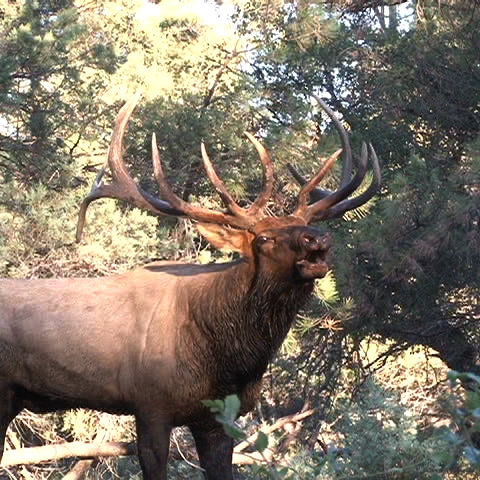 Here are a few good rules of thumb to keep in mind when looking for a big “shooter” bull.
Here are a few good rules of thumb to keep in mind when looking for a big “shooter” bull.
- Identify the “sword” (G4) and the “whale tail” to verify that you are looking at a 6×6 or better bull.
- Look for long main beams and strong 3rd’s and 5th’s.
- Look for good “curve” in the G1, G2, & G3 points. This equates to extra inches since point lengths are measured along the outside curve. Bulls with curvy looking points score well.
- Straight looking points are always short. Curved points with “belly” to them are longer. Bulls with straight looking points won’t score well.
- You must always have two views. Look at the bull from the side and front. A back or front view only are not good indicators. I’ve made this mistake before and regretted it! You must see the point lengths to recognize a big bull.
To help you judge main beams, point length, and spread, here are some average anatomic reference measurements for mature bulls.
-Antler Pedical (Burr) to nose= 17”-18”
-Eye to nose= 13”
-Top of back to shoulder “V spot”= 20”
-Top of back to belly= 25”-28”
-Body girth through the shoulders (front view) = 18”
-Main beam average length to G4= 28”-30”
-Tip to tip ear spread (front view) = 26”
To more accurately estimate the inside spread of a bull- visually suspend the ear spread between the widest point of the beams. Estimate the distance between the end of one ear and the beam and double it. This will give you a very good idea of the bull’s inside spread. Example: You estimate 8 inches between the ear tip and the widest point of the main beam. 8×2= 16. Add 16” to 26” (tip to tip) and you have a spread of 42”.
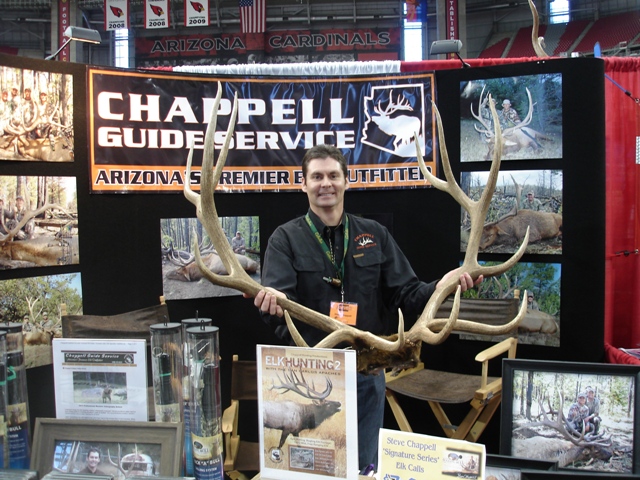 You probably have noticed that I haven’t talked at all about “net” score versus “gross” score. The reason is because I’m not that interested in net scores. I think if a bull grows it, he should get credit for it. But to help in estimating a net score remember that most big bulls will have 10 to 12 inches of total symmetry deductions. Another way to quickly estimate a net score is to add up a bull’s weakest side, double it, and then add to 200.
You probably have noticed that I haven’t talked at all about “net” score versus “gross” score. The reason is because I’m not that interested in net scores. I think if a bull grows it, he should get credit for it. But to help in estimating a net score remember that most big bulls will have 10 to 12 inches of total symmetry deductions. Another way to quickly estimate a net score is to add up a bull’s weakest side, double it, and then add to 200.
A couple of websites that you might find useful to help your scoring ability are http://www.boone-crockett.org/, and www.Pope-Young.org.
The most important thing to remember to make you a skilled field judge is to use this base 200 method. It will help you tremendously! Scoring mounted bulls is a great way to improve your skills as well.
Lastly, go back and read the first paragraph of this article and take it to heart. You’ll be much more satisfied with the outcome of most of your elk hunts. Good luck on your hunts and have fun field judging the bulls!

